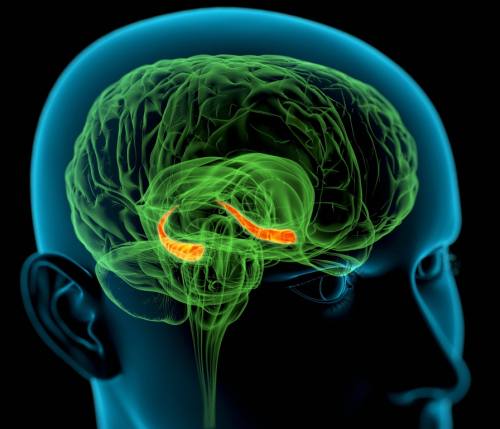Hippocampal Memory Systems. Credit: Columbia University
(Medical Xpress)—Native peoples in regions where cameras are uncommon sometimes react with caution when their picture is taken. The fear that something must have been stolen from them to create the photo is often inescapable. On small scales, we know it is in fact impossible to measure something without changing its essential character in some way. One idea that has recently gained momentum, is that although our brains have mechanisms for unpacking past experience into a form where it can be consciously manipulated with the full power of the mind, mechanisms to repack those memories into the original form lack similar finesse. In this light, once touched, a memory is no longer exactly the same. A paper just published in PNAS takes a closer look at how memories are reconsolidated after their retrieval. In showing just how easy it is to change certain kinds of memories, the authors not only raise new concerns for eyewitness testimony in the courtroom, but may explain in part why such testimony often tends to accumulate doubt in the face of continued questioning. The implication is that this new knowledge may be useful in the treatment post traumatic stress in veterans and victims.
The 146 participants in the study watched the pilot episode of the TV series 24, about a fictional terrorist attack. The researchers then gave them various retrieval tests which reactivated their recently stored knowledge. The experiment was to then present an audio summary of the episode which included some erroneous descriptions of the actual events. After this "re-learning" step, another memory test was given at a later time. What the researchers report is that when the retrieval step preceded the re-learning, misinformation impaired subsequent retrieval of the original memory.
This kind of "episodic" memory is referred to as declarative memory, as opposed to procedural memory such as learning to ride a bike or to tie a shoe. Declarative memory is clearly the more labile process and it can be selectively lost in amnesia. In many cases declarative memory can reinforced by recall, and at least when desirable, that is the basis of rote memorization. In other cases, like the "earworm" refrains of popular songs, that same reinforcement effect becomes an annoyance. Less innocuous, are memories like that of witnessing the tragic loss of a loved one, which can haunt us with recurrent images and nightmares.
Current therapy for traumatic memories may involve drugs like propranolol, which can be effective at reducing emotional response to a fear-inducing stimulus. As these drugs typically have side-effects, a method that might reprogram memories more selectively would be desirable. However, arranging a scenario in which declarative memory can be rewritten during a reconsolidation process seems a lot easier than creating a general process that rewrites a specific emotionally-charged memory.
Psychological approaches treat the brain as a black box. Seeking to alter the contents of that box independent of knowledge of the structures that supply the behavior in question is a tough challenge. One can ask whether having a full brain activity map at hand would offer anything additional. Although that is something we can not answer definitively without any knowledge of what such a map might look like, we can guess that if certain patterns are correlated with the certain experiences, causality can be tentatively assigned. The trick is just to identify those patterns. The humble beginnings of activity map science are already upon us in the form of new devices to identify and short-circuit epileptic events.
The malleability of memory does not surprise anyone aware of the fact that brain does not store memory like the RAM in a computer. The imperfect recall of stored memory is the direct result of the ability to continually push new memory onto a finite structure. Understanding the activity supported by that structure to the degree that we can reprogram memories, or even behaviors, is no small step, but one to which we are already committed.
More information: Impairing existing declarative memory in humans by disrupting reconsolidation, PNAS, www.pnas.org/content/early/201 … /1218472110.abstract
Abstract
During the past decade, a large body of research has shown that memory traces can become labile upon retrieval and must be restabilized. Critically, interrupting this reconsolidation process can abolish a previously stable memory. Although a large number of studies have demonstrated this reconsolidation associated amnesia in nonhuman animals, the evidence for its occurrence in humans is far less compelling, especially with regard to declarative memory. In fact, reactivating a declarative memory often makes it more robust and less susceptible to subsequent disruptions. Here we show that existing declarative memories can be selectively impaired by using a noninvasive retrieval–relearning technique. In six experiments, we show that this reconsolidation-associated amnesia can be achieved 48 h after formation of the original memory, but only if relearning occurred soon after retrieval. Furthermore, the amnesic effect persists for at least 24 h, cannot be attributed solely to source confusion and is attainable only when relearning targets specific existing memories for impairment. These results demonstrate that human declarative memory can be selectively rewritten during reconsolidation.
Journal information: Proceedings of the National Academy of Sciences
© 2013 Medical Xpress




















